In the ever-evolving world of kitchen appliances, contact grills have emerged as a favorite among culinary enthusiasts and home cooks alike. These versatile cooking tools have found their way into countless kitchens, thanks to their ability to deliver that perfect char-grilled flavor and texture. As the demand for high-quality contact grills continues to rise, the OEM (Original Equipment Manufacturer) landscape becomes increasingly competitive. This article delves into the intricacies of the contact grill OEM market, exploring the key players, technological advancements, challenges, opportunities, and the future outlook for this dynamic industry.
Introduction to Contact Grill OEM
Contact grills have become a staple in the kitchen appliance market, offering a convenient and efficient way to cook a variety of foods with a unique grill texture. At the heart of this industry are Original Equipment Manufacturers (OEMs), who play a pivotal role in designing, manufacturing, and supplying these versatile cooking appliances. In this overview, we delve into the intricacies of the contact grill OEM sector, examining its significance, market dynamics, and future prospects.
The contact grill, often referred to as a flat grill or countertop grill, is a kitchen appliance that uses two flat plates to cook food by pressing it down. This method allows for even heat distribution and a delicious charred surface that mimics traditional outdoor grilling. As consumer preferences lean towards healthier cooking methods, contact grills have gained popularity for their ability to cook without adding excess fat or oil.
In the realm of contact grill OEMs, these companies specialize in the production of these appliances for a wide range of brands. They are not just manufacturers but also innovators, constantly seeking to improve upon the existing technology to meet the evolving demands of the market. From high-end models with advanced features to budget-friendly options, OEMs cater to a diverse customer base.
The European and American markets have been at the forefront of contact grill adoption, with consumers gravitating towards these compact and efficient appliances for their convenience. In Europe, the contact grill market is characterized by a strong focus on design and energy efficiency, reflecting the region’s commitment to sustainability. Similarly, in the USA, there’s a keen interest in grilling as a lifestyle, leading to a market that values both performance and innovation.
One of the key drivers for the growth of contact grill OEMs is the rise in health consciousness among consumers. With an increasing number of people looking to reduce their fat intake, contact grills offer a solution that allows for the cooking of lean proteins and vegetables with minimal oil. This has opened up new opportunities for OEMs to develop products that cater to this health-conscious demographic.
The competition within the contact grill OEM landscape is fierce, with established players vying for market share alongside emerging brands. These OEMs differentiate themselves through a combination of factors, including the quality of materials used, the durability of the appliances, and the inclusion of unique features. For example, some models now come with adjustable heat settings, digital temperature controls, and even Bluetooth connectivity for smart kitchen integration.
Innovation is a cornerstone of the contact grill OEM industry. Continuous advancements in technology have led to the development of contact grills that can sear, sauté, and even bake. The integration of smart technology has also become a trend, with some models now offering apps that allow users to monitor and control the cooking process remotely. These technological upgrades not only enhance the user experience but also open up new possibilities for marketing and customer engagement.
Despite the growth and innovation, contact grill OEMs face several challenges. One of the most significant is the need to comply with stringent safety and regulatory standards. Ensuring that these appliances meet health and safety requirements is critical for both the OEMs and the end consumers. Additionally, the rapidly changing consumer landscape means that OEMs must stay abreast of new trends and adapt their products accordingly.
Looking ahead, the contact grill OEM sector is poised for continued growth. As the world becomes more urbanized and time-poor, the demand for convenient cooking solutions is likely to increase. This presents an opportunity for OEMs to expand their product lines and explore new markets, both domestically and internationally. The integration of eco-friendly materials and energy-efficient designs is also expected to become a key differentiator in the industry.
In conclusion, the contact grill OEM industry is a dynamic and innovative sector that is driving the evolution of kitchen appliances. As consumer preferences continue to shift towards healthier and more convenient cooking methods, OEMs will play a crucial role in shaping the future of the contact grill market. By focusing on innovation, quality, and market trends, these companies are well-positioned to meet the demands of a changing world.

Market Overview of Contact Grills in Europe and the USA
In Europe, the contact grill market has seen a steady growth trajectory, driven by an increasing interest in healthy cooking methods and convenience. Consumers are gravitating towards contact grills due to their ability to cook food quickly and evenly, while also reducing the need for additional fats and oils. The demand for these grills is particularly high in countries like Germany, the UK, and France, where there’s a strong focus on health and wellness.
The American market, on the other hand, has a more diverse landscape. Here, contact grills are often seen as a premium appliance, with a significant portion of the market being captured by high-end brands. The US market is also influenced by a preference for outdoor cooking, which has seen the rise of portable contact grills suitable for tailgating and camping. This trend has been further amplified by the COVID-19 pandemic, which led to a surge in backyard cooking and outdoor living.
In Europe, the contact grill market is segmented by various factors, including product type, such as single and double-sided grills, and by features like temperature control and non-stick coatings. The demand for high-quality, durable grills has been on the rise, with stainless steel being a popular choice due to its ease of cleaning and longevity. Additionally, eco-friendly and sustainable materials are gaining traction, as consumers become more environmentally conscious.
In the USA, the market is characterized by a strong emphasis on innovation and technology. Smart grills equipped with digital controls and Wi-Fi connectivity are becoming increasingly popular, offering users the ability to monitor and adjust cooking settings remotely. This tech-driven approach has also opened up new opportunities for contact grill OEMs to create unique value propositions.
The competitive landscape in both regions is dynamic, with several key players vying for market share. In Europe, brands like Tefal and Gaggenau have established themselves as leaders, offering a wide range of contact grills that cater to different consumer needs. In the USA, brands such as George Foreman and Breville have a strong presence, leveraging their brand recognition and marketing power to capture consumer interest.
One of the notable trends in the European market is the emergence of compact and countertop contact grills, which are gaining popularity among urban dwellers and small households. These smaller models are designed to be more space-efficient and are often more affordable, making them accessible to a broader consumer base.
Similarly, in the American market, there’s a trend towards multifunctionality, with many contact grills now offering additional features like grilling, flipping, and even toasting. This has expanded the appeal of contact grills beyond traditional cooking methods, appealing to consumers who seek versatility in their kitchen appliances.
Another interesting development in both Europe and the USA is the rise of premium and luxury contact grills. These high-end models are often crafted from premium materials and are equipped with advanced features that cater to the needs of discerning consumers. The price point for these products is significantly higher, reflecting their superior quality and craftsmanship.
When it comes to distribution channels, contact grills in both Europe and the USA are widely available through a variety of retail outlets, including home improvement stores, kitchenware shops, and online marketplaces. The convenience of online shopping has played a crucial role in the growth of the contact grill market, with many consumers preferring to browse and purchase products from the comfort of their homes.
Despite the growth and popularity of contact grills, challenges remain. In Europe, the competitive pricing and fierce marketing campaigns from other appliance categories can pose a threat to the contact grill market. Similarly, in the USA, the rising cost of living and economic uncertainties can impact consumer spending on kitchen appliances.
Looking ahead, the contact grill market in both Europe and the USA is poised for further growth, driven by innovation, consumer demand, and changing lifestyles. As technology continues to evolve, we can expect to see more advanced features, greater customization options, and perhaps even entirely new cooking experiences being offered by contact grill OEMs.

Key Players and Competition in the Contact Grill OEM Landscape
In the realm of Contact Grill OEMs, several key players have established themselves as industry leaders, each bringing unique strengths and innovations to the table. From well-known household names to niche market specialists, the competition is fierce and ever-evolving.
One of the major players in the Contact Grill OEM space is George Foreman. Known for its iconic grills, the brand has become synonymous with quality and convenience. Their products often feature advanced technology such as adjustable heat settings and non-stick surfaces, which have helped them maintain a strong market presence.
Another significant competitor is Breville, an Australian company that has gained a reputation for high-quality appliances. Breville’s contact grills are praised for their sleek design and powerful performance, appealing to both casual cooks and culinary enthusiasts alike.
In the USA, Cuisinart has emerged as a formidable force in the Contact Grill OEM market. With a wide range of models catering to different needs, Cuisinart offers grills that are both affordable and durable, making them a go-to choice for many consumers.
On the European front, German brand Tefal is a standout name in the contact grill OEM industry. Known for its commitment to innovation, Tefal has introduced several patented technologies that enhance the cooking experience, such as their patented Thermo-Spot indicator, which indicates when the grill is at the perfect temperature for cooking.
Among the newer entrants, Hamilton Beach has made a name for itself with its user-friendly and budget-friendly contact grills. These appliances often come with additional features like reversible plates and removable drip pans, making cleaning and maintenance a breeze.
The competition in the Contact Grill OEM landscape is not just about the big players; it also involves a number of niche brands that offer specialized solutions. For instance, the Swiss brand Savorus focuses on eco-friendly and sustainable grilling options, while the Italian brand Roccbox targets the professional-grade market with its commercial-grade contact grills.
One cannot overlook the impact of international giants like Philips and Siemens, who have also ventured into the contact grill market. Philips, with its focus on smart home technology, offers contact grills that can be controlled via an app, while Siemens provides a blend of style and functionality with their premium appliances.
The competition among these key players is driven by a combination of factors, including innovation, brand loyalty, and distribution networks. Companies are constantly striving to differentiate their products through unique features, such as adjustable heat zones, rapid preheating capabilities, and advanced temperature control systems.
Additionally, the rise of health-conscious consumers has led to a growing demand for contact grills that offer healthier cooking options, such as those that reduce the need for additional fats and oils. This has prompted manufacturers to develop grills with non-stick surfaces and precise temperature control to ensure even cooking and prevent flare-ups.
In the face of this competition, Contact Grill OEMs must also navigate the challenges of regulatory compliance, which can vary significantly by region. This includes adherence to safety standards, emissions regulations, and labeling requirements, which all play a crucial role in the marketability of their products.
Ultimately, the Contact Grill OEM landscape is characterized by a dynamic interplay between innovation, consumer demand, and market competition. As consumers continue to seek out the perfect balance of convenience, performance, and health, these key players will undoubtedly continue to push the boundaries of what’s possible in the world of contact grilling.
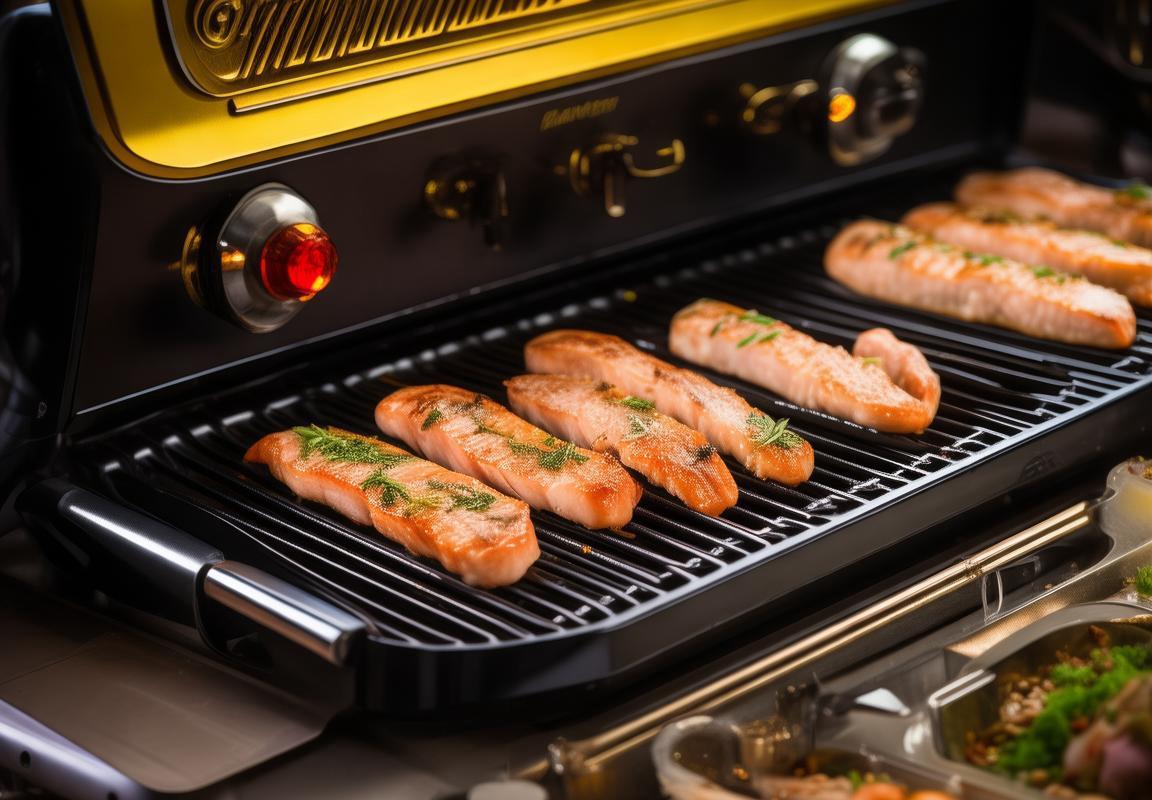
Technological Advancements in Contact Grill OEMs
In the realm of contact grill OEMs, technological advancements have been pivotal in shaping the competitive landscape. These innovations not only enhance the user experience but also drive market demand. Let’s delve into some of the notable technological breakthroughs that have been making waves in this sector.
The integration of smart technology has revolutionized how contact grills are designed and operated. Smart grills are equipped with digital interfaces that allow users to control cooking temperatures, times, and even cooking modes directly from their smartphones or tablets. This connectivity has made grilling more accessible and intuitive for consumers who value convenience and precision.
One of the most significant technological advancements is the development of variable heat zones. Traditional contact grills often have a single heat source, which can lead to uneven cooking. However, with the introduction of multiple heat zones, these grills can now offer precise temperature control across the cooking surface. This feature is particularly beneficial for users who want to cook different types of food simultaneously without compromising on quality.
The evolution of non-stick coatings has also played a crucial role in the advancement of contact grills. OEMs have moved beyond the traditional PTFE (Teflon) coatings, introducing new materials that are more durable and healthier. These new coatings are not only easier to clean but also resistant to scratching and peeling, ensuring a longer lifespan for the grill.
Energy efficiency is another area where contact grill OEMs have made substantial progress. Modern grills are designed to use less energy while maintaining high cooking temperatures. This not only helps in reducing utility bills for consumers but also contributes to a more sustainable approach to cooking. Features like automatic shut-off and energy-saving modes have become standard in many high-end models.
Safety has always been a top priority in the kitchen appliance industry, and contact grills are no exception. Recent technological advancements include the integration of safety features such as temperature sensors that prevent overheating and potential fires. These sensors can automatically adjust the heat or shut off the grill if it detects unsafe conditions, offering peace of mind to users.
The introduction of eco-friendly materials has also gained traction in the contact grill market. OEMs are increasingly using recycled materials and sustainable resources in the manufacturing process. This not only reduces the environmental impact but also appeals to consumers who are environmentally conscious and looking for greener alternatives.
One of the most exciting technological trends in contact grills is the inclusion of smart cooking modes. These modes are tailored to specific types of food, such as steaks, vegetables, or seafood, and automatically adjust the heat and cooking time for optimal results. This level of automation takes the guesswork out of grilling and ensures that even the most novice cooks can achieve professional-grade results.
Another innovation is the use of infrared heating elements. These elements provide a faster and more even cooking experience compared to traditional heating methods. Infrared heat penetrates food more quickly, resulting in a more tender and flavorful outcome.
In the realm of aesthetics, contact grill OEMs have been experimenting with sleeker designs and materials. Modern grills are not just functional; they are also stylish additions to any kitchen. The use of high-quality stainless steel, brushed finishes, and innovative shapes has made these appliances not just cooking tools but also pieces of kitchen art.
Lastly, the rise of smart home integration has opened up new possibilities for contact grills. Users can now control their grills through voice commands or smart home systems, making the cooking process even more seamless. This integration allows for greater convenience and control, as users can start their grilling session before they even arrive home.
In conclusion, the technological advancements in contact grill OEMs have transformed the market, offering consumers a wide range of features that enhance the grilling experience. From smart technology and precise heat control to eco-friendly materials and stylish designs, these innovations continue to drive the competition and push the boundaries of what is possible in the world of contact grills.
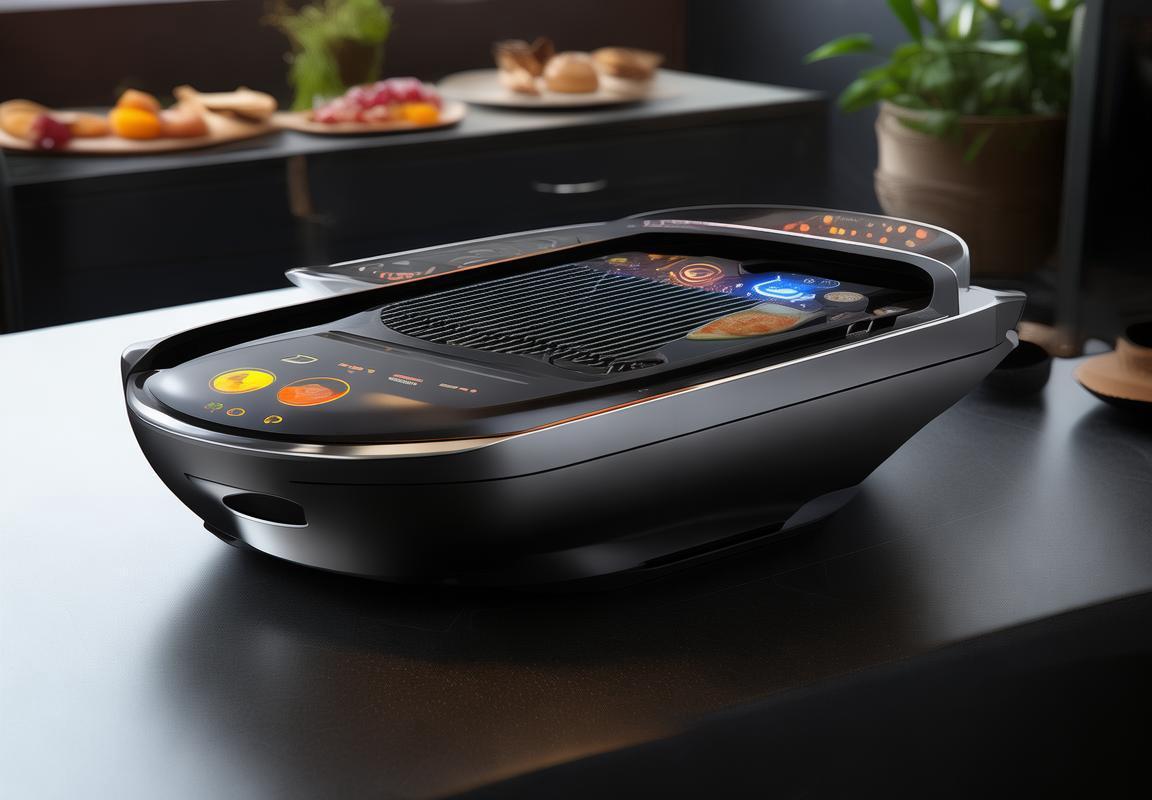
Challenges and Opportunities for Contact Grill OEMs
In the fast-paced world of Contact Grill OEMs, navigating the complexities of the market requires a keen eye for challenges and the foresight to seize opportunities. Here’s a deep dive into the landscape:
The competitive nature of the Contact Grill OEM industry demands continuous innovation and a focus on customer needs. OEMs must balance the push for advanced features with the pull of consumer preferences.
One significant challenge lies in the rapid pace of technological advancements. Keeping up with innovations such as smart connectivity and energy efficiency can be daunting, yet it’s crucial for OEMs to remain competitive. Consumers are increasingly looking for grills that not only cook well but also integrate seamlessly into their smart home ecosystems.
Regulatory compliance presents another hurdle. Different regions have varying safety standards and environmental regulations that OEMs must adhere to. This not only adds complexity to the production process but also requires a deep understanding of local markets and consumer expectations.
In the face of these challenges, opportunities arise for OEMs that can adapt and innovate. For instance, the rise of health-conscious consumers has sparked a demand for contact grills that offer adjustable temperature controls and non-stick surfaces, reducing the need for excessive oil and promoting healthier cooking options.
Sustainability is another area where OEMs can find a window of opportunity. As environmental concerns grow, there’s a growing market for grills made from sustainable materials and designed for energy-efficient cooking. This shift not only appeals to eco-friendly consumers but also opens up new markets in regions with strong environmental policies.
Customization is becoming a key driver in the contact grill market. OEMs that can offer a range of options from size to features cater to a wider audience. This could mean everything from single-plate grills for small apartments to multi-functional models with additional cooking surfaces.
The global market for contact grills is also witnessing a trend towards convenience. Features like automatic shut-off, easy-to-clean surfaces, and intuitive interfaces are becoming increasingly important. OEMs that can simplify the cooking experience without compromising on quality will likely gain a competitive edge.
Moreover, the integration of contact grills with other kitchen appliances is on the rise. Grills that can be paired with smart ovens or refrigerators offer a more integrated cooking solution, and OEMs that can develop these multi-appliance systems stand to benefit significantly.
The digital transformation of the industry is also opening new avenues for growth. Online marketplaces and social media platforms have become powerful tools for OEMs to reach consumers directly. By leveraging these digital channels, OEMs can engage with customers, gather feedback, and tailor their products to meet evolving demands.
Another opportunity lies in the international market. As the contact grill market matures in developed countries, OEMs can look to emerging markets where there is a growing middle class with increased disposable income. These markets often have a lower saturation of high-end cooking appliances, making them ripe for innovation and expansion.
Lastly, the collaboration between OEMs and foodservice providers presents a unique opportunity. As more consumers seek restaurant-quality meals at home, there’s a chance for OEMs to partner with foodservice companies to develop commercial-grade contact grills that can be adapted for home use.
In summary, while challenges such as rapid technological advancements and regulatory compliance are ever-present, the Contact Grill OEM landscape is rich with opportunities. By focusing on innovation, sustainability, customization, convenience, digital transformation, international expansion, and partnerships, OEMs can not only navigate the challenges but also thrive in this dynamic market.

Consumer Insights and Buying Behavior
Understanding consumer insights and buying behavior in the contact grill market is crucial for OEMs to tailor their products and marketing strategies effectively. Here’s a delve into the nuances of what drives consumers’ decisions:
-
Health and Wellness TrendsConsumers are increasingly conscious of their health and are gravitating towards cooking methods that promote healthier eating habits. Contact grills, known for their ability to cook with less oil, are appealing to this demographic. OEMs that can incorporate features that enhance health, such as adjustable temperature controls and non-stick surfaces, are likely to attract more customers.
-
Convenience and Time-Saving FeaturesThe fast-paced lifestyle of modern consumers often means that convenience is a top priority. Contact grill OEMs that offer time-saving features, like rapid heating and preheat settings, are more likely to resonate with customers. Additionally, features that simplify cleaning, such as dishwasher-safe parts, are also highly valued.
-
Cooking VersatilityConsumers are looking for appliances that can do more than one thing. Contact grills that can function as both a grill and a panini press, or those that can sear, sauté, and bake, are becoming increasingly popular. OEMs that can provide a versatile cooking experience without sacrificing quality are well-positioned to capture market share.
-
Design and AestheticsThe appearance of a contact grill can be a significant factor in a consumer’s decision. Sleek designs, innovative materials, and unique colors are attracting those who seek a kitchen appliance that complements their kitchen decor. OEMs that focus on design elements are not only appealing aesthetically but also in terms of brand perception.
-
Online Reviews and Influencer EndorsementsThe digital age has given consumers unprecedented access to information, and online reviews play a pivotal role in their buying decisions. Positive reviews can significantly influence consumer trust and purchase intent. Similarly, endorsements from influencers can sway consumers who look to these individuals for product recommendations.
-
Value for MoneyConsumers are always on the lookout for the best deals. Contact grill OEMs that offer high-quality products at competitive prices are more likely to attract budget-conscious buyers. The balance between affordability and performance is a critical factor in the contact grill market.
-
Sustainability and Eco-Friendly PracticesWith growing environmental concerns, consumers are more likely to support brands that demonstrate sustainability efforts. OEMs that use recycled materials, have energy-efficient designs, or support eco-friendly initiatives may find a niche market within environmentally conscious consumers.
-
Smart Technology IntegrationThe integration of smart technology in contact grills is a trend that is gaining traction. Consumers who are tech-savvy and interested in connected kitchen appliances are drawn to features like remote control cooking, Bluetooth connectivity, and digital recipe guides. OEMs that can innovate in this area are tapping into a growing segment of the market.
-
Brand Reputation and TrustEstablished brands with a strong reputation for quality and reliability often have an edge over new entrants. Consumers are more likely to purchase from brands they trust, which is why OEMs with a history of producing durable and reliable contact grills may find it easier to retain customers.
-
After-Sales Service and SupportThe customer experience doesn’t end with the purchase. Consumers value brands that offer excellent after-sales service and support. This includes easy-to-access customer service, warranty coverage, and reliable repair services. OEMs that prioritize customer satisfaction in this aspect can build long-term relationships with their clientele.
By understanding these insights into consumer behavior, contact grill OEMs can better align their product development and marketing strategies to meet the evolving needs and preferences of their target audience.
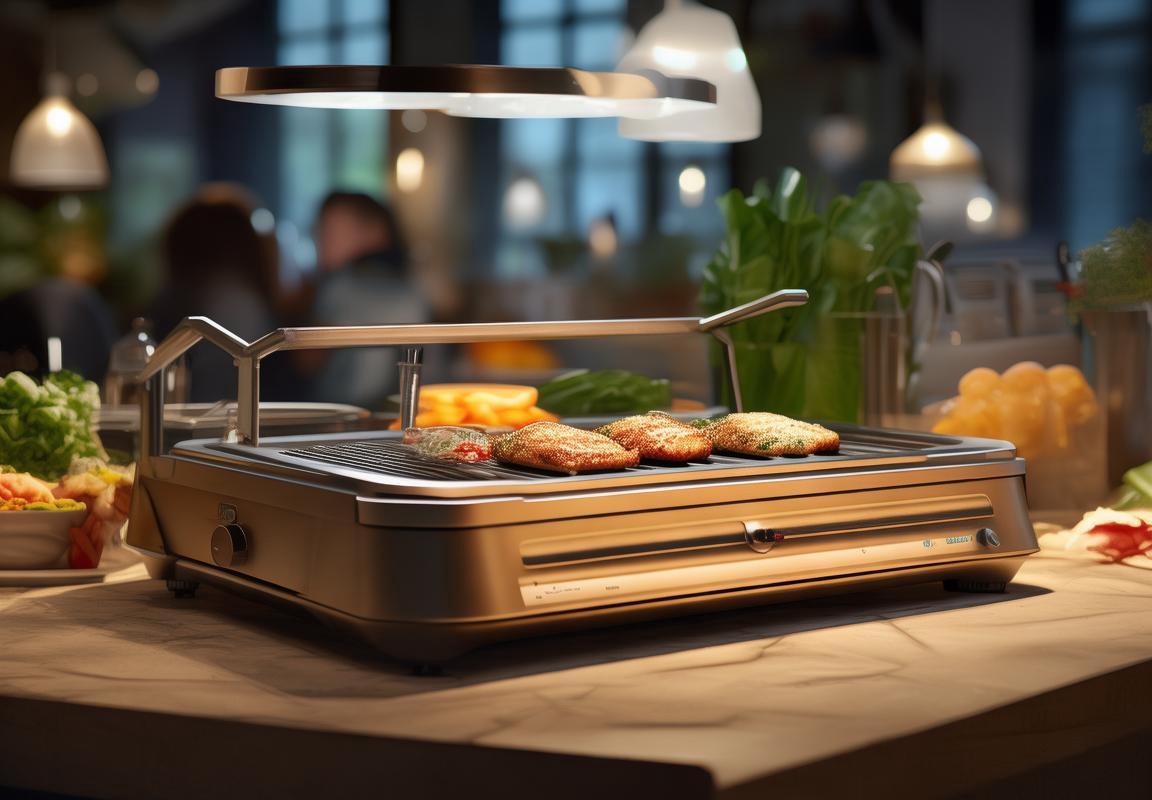
Future Outlook for Contact Grill OEMs
In the evolving landscape of the contact grill OEM industry, several factors are shaping the future outlook, promising both challenges and opportunities.
The rise of smart appliances has been a significant trend, and contact grill OEMs are at the forefront of integrating advanced technology into their products. From Wi-Fi connectivity that allows for remote monitoring to LED lighting that illuminates cooking areas more efficiently, these innovations are enhancing user experience and safety.
Health-conscious consumers are increasingly seeking out grilling options that minimize smoke and charred flavors, leading to a growing demand for contact grills that offer healthier cooking solutions. This shift towards healthier grilling methods is creating new opportunities for OEMs to develop and market products that cater to these dietary preferences.
As the world becomes more environmentally aware, sustainability is becoming a key consideration for OEMs. The future will likely see a surge in the development of contact grills made with recyclable materials and energy-efficient designs, reflecting a commitment to reducing the industry’s carbon footprint.
E-commerce has transformed how consumers discover and purchase products, and contact grill OEMs are adapting by optimizing their online presence. Enhanced online shopping experiences, including virtual cooking demonstrations and detailed product specifications, are becoming essential for engaging consumers and driving sales.
Customization is another area where contact grill OEMs are finding new ground. With the ability to tailor grills to specific user preferences, OEMs can offer products that stand out in a crowded market. Personalization can range from different heat settings to unique grill plate designs, catering to a wide array of culinary styles.
The integration of contact grills with other kitchen appliances is a trend that’s gaining traction. OEMs are exploring ways to create seamless kitchen ecosystems where multiple devices can communicate and operate together, enhancing convenience and efficiency.
Innovation in cooking techniques is driving demand for contact grills that can achieve different cooking styles, such as grilling, searing, and even smoking. As a result, OEMs are investing in research and development to produce multi-functional grills that can handle a variety of recipes and cooking needs.
As contact grill technology continues to advance, there’s an increasing emphasis on user safety. Features like temperature controls, automatic shut-offs, and childproofing are becoming standard, not just as options. This focus on safety is not only attracting cautious consumers but also opening up new markets, especially in households with young children.
The rise of the millennial consumer is reshaping the contact grill market. This demographic is more likely to be tech-savvy, value innovation, and look for social proof. Contact grill OEMs that can appeal to these preferences will find a loyal customer base.
The global contact grill market is also witnessing the emergence of new entrants from diverse geographic regions, bringing fresh ideas and competitive pricing. This internationalization of the market is creating opportunities for OEMs to expand their reach and explore new growth markets.
Finally, the future of contact grill OEMs hinges on their ability to stay ahead of regulatory changes. As new safety and environmental regulations come into play, OEMs must adapt quickly to ensure compliance without compromising on product quality or innovation. This agility will be crucial for long-term success in the industry.
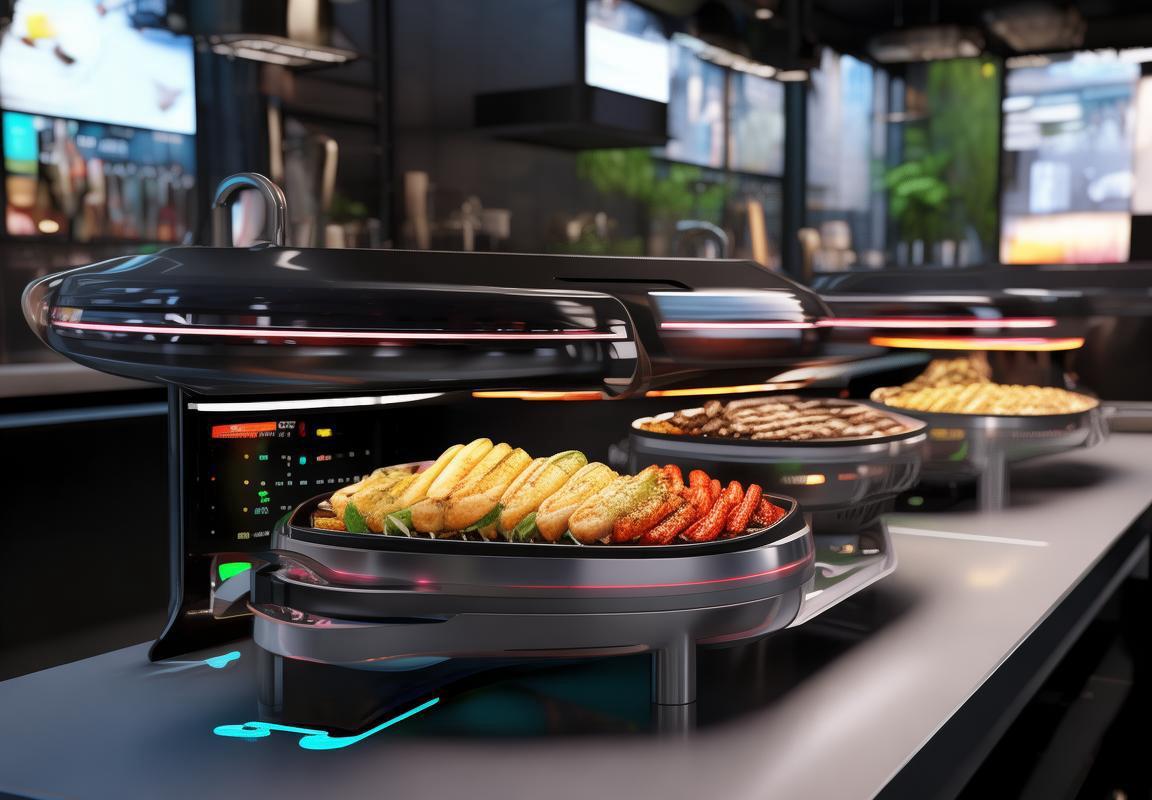
Case Studies: Successful Contact Grill OEMs
In the competitive landscape of contact grill OEMs, several companies have managed to carve out a niche for themselves through innovation, quality, and strategic partnerships. Let’s delve into the case studies of a few successful OEMs in the industry.
-
Innovative Design and User ExperienceOne OEM has gained recognition for its commitment to innovative design. Their contact grills feature sleek, modern aesthetics that appeal to consumers looking for a high-tech kitchen appliance. The company’s focus on user experience has led to intuitive interfaces and easy-to-use controls, making their grills a favorite among both seasoned chefs and culinary novices.
-
Quality Components and DurabilityA notable OEM has made a name for itself by sourcing premium components for their contact grills. From high-quality stainless steel to durable heating elements, these grills are built to last. The OEM’s emphasis on longevity has resulted in a loyal customer base that values reliability and performance over time.
-
Sustainability InitiativesAn emerging OEM has stood out by integrating sustainability into its product development process. Their contact grills are designed with eco-friendly materials and energy-efficient technologies. This commitment to sustainability has resonated with environmentally conscious consumers, leading to a growing market share for the company.
-
Strategic Partnerships and Brand ExpansionOne successful OEM has leveraged strategic partnerships to expand its brand presence. By collaborating with well-known kitchenware retailers and online marketplaces, the company has gained access to a broader customer base. This strategic move has not only increased sales but also enhanced the brand’s credibility in the market.
-
Customization and PersonalizationAn innovative OEM has differentiated itself by offering a high degree of customization and personalization in their contact grills. Customers can choose from various grill plates, temperature settings, and even add-ons like infrared heating. This level of flexibility has allowed the company to cater to a diverse range of preferences and cooking styles.
-
Marketing and BrandingAnother successful OEM has mastered the art of marketing and branding. Their campaigns are engaging, informative, and focused on the benefits of using a contact grill. By showcasing the ease of use, health benefits, and versatility of their products, the company has created a strong brand identity that stands out in a crowded market.
-
Customer Service and SupportAn OEM that has excelled in customer service has built a reputation for its exceptional after-sales support. From detailed user manuals to responsive customer service teams, the company ensures that customers feel supported throughout their ownership journey. This dedication to customer satisfaction has fostered brand loyalty and positive word-of-mouth referrals.
-
Global ExpansionAn international OEM has successfully expanded its market reach by adapting its products to different cultural preferences and regulatory standards. By understanding the unique needs of various regions, the company has been able to establish a strong presence in multiple countries, contributing to its global success.
-
Continuous Research and DevelopmentA forward-thinking OEM has invested heavily in research and development to stay ahead of the curve. By continuously improving their contact grill technology, the company has introduced features like advanced temperature control systems and smart grilling capabilities. This commitment to innovation has kept them at the forefront of the industry.
-
Collaboration with Chefs and InfluencersOne OEM has gained traction by collaborating with renowned chefs and influencers. These partnerships have helped to position their contact grills as a must-have kitchen appliance for professional chefs and home cooks alike. The endorsement from culinary experts has significantly boosted the company’s credibility and sales.
These case studies highlight the diverse strategies that successful contact grill OEMs have employed to thrive in a dynamic market. From focusing on design and durability to sustainability and customer service, these companies have demonstrated that a combination of innovation, quality, and strategic thinking can lead to lasting success.
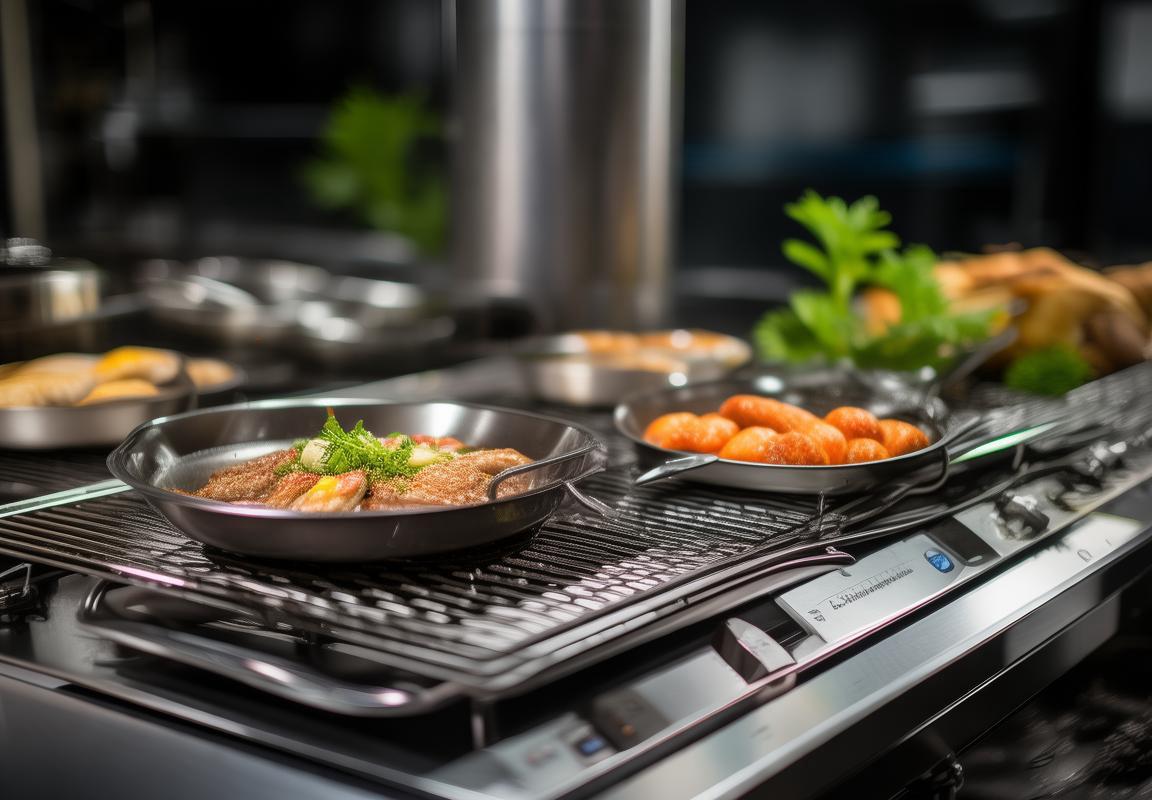
Conclusion
The evolution of the contact grill industry has been marked by significant strides in technology, consumer preferences, and market dynamics. OEMs (Original Equipment Manufacturers) within this sector have navigated through a complex landscape, facing both challenges and opportunities. Reflecting on the journey, it’s clear that the future holds immense potential for innovation and growth. Here’s a snapshot of what the contact grill OEM landscape might look like in the years to come.
Consumer demand has shifted towards healthier cooking methods, and this has pushed OEMs to prioritize features that enhance food quality and nutritional value. Smart technology has become a cornerstone in the industry, offering grills that can adjust to varying temperatures and cooking times, ensuring the perfect sear and reducing the risk of undercooking or overcooking. As a result, OEMs are focusing on integrating advanced sensors and AI-driven systems to create more intuitive and efficient cooking experiences.
Innovation in materials and design has also been a key factor in the success of contact grill OEMs. Lightweight, durable, and easy-to-clean materials are in high demand, and manufacturers are responding by developing grills that are not only functional but also aesthetically pleasing. The use of non-stick coatings and removable cooking surfaces has made maintenance simpler, which is a major selling point for many consumers.
The global market for contact grills has seen a surge in competition, with several key players vying for market share. These players, such as Wolfgang Puck Grills, George Foreman, and Breville, have managed to stand out by investing in research and development, as well as by forming strategic partnerships and collaborations. Their ability to adapt to changing trends, such as the demand for portable and outdoor-friendly grills, has been instrumental in their success.
Another factor contributing to the success of contact grill OEMs is their commitment to sustainability. As environmental concerns grow, manufacturers are looking for ways to reduce their carbon footprint. This includes using recycled materials, designing products for longer lifespans, and ensuring that the production process is as eco-friendly as possible. Consumers are increasingly looking for brands that align with their values, and OEMs that prioritize sustainability are likely to gain a competitive edge.
However, the path to success is not without its hurdles. Contact grill OEMs face challenges such as high production costs, fluctuating raw material prices, and the need to constantly innovate to keep up with rapidly changing consumer preferences. Additionally, navigating regulatory compliance and ensuring product safety can be complex and resource-intensive. Despite these challenges, the opportunities for growth remain vast.
The rise of e-commerce has provided contact grill OEMs with new avenues for reaching consumers. Online marketplaces have become key channels for distribution, allowing manufacturers to expand their reach and cater to niche markets. Social media and influencer partnerships have also become crucial in shaping consumer perceptions and driving sales.
Looking ahead, the future of contact grill OEMs is bright. Advances in 3D printing technology could revolutionize the manufacturing process, allowing for the production of customized grills tailored to individual customer preferences. The integration of virtual reality (VR) and augmented reality (AR) into the cooking experience could also become a reality, providing consumers with interactive and educational cooking sessions.
The emphasis on health and wellness is likely to continue shaping the contact grill market. OEMs that can offer innovative solutions for healthy cooking, such as grills that minimize the need for oil and fat, will find themselves in a strong position. Moreover, the growing interest in outdoor living and the desire for convenient cooking options in smaller spaces could lead to increased demand for compact and portable grills.
In conclusion, the contact grill OEM landscape is dynamic, with a focus on technological advancements, sustainability, and meeting the evolving needs of consumers. While challenges persist, the opportunities for innovation and growth are plentiful. OEMs that can adapt, innovate, and stay true to their brand values are well-positioned to thrive in the years to come.